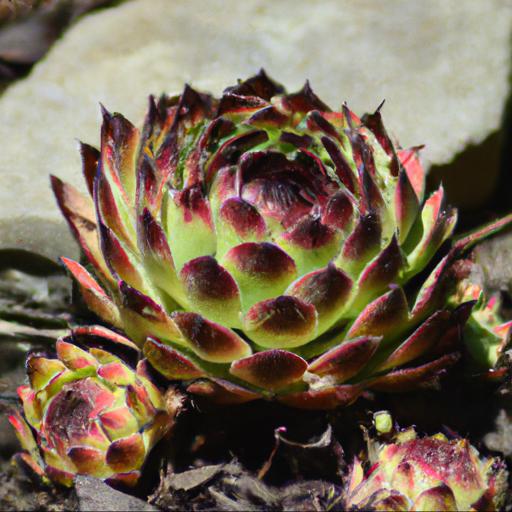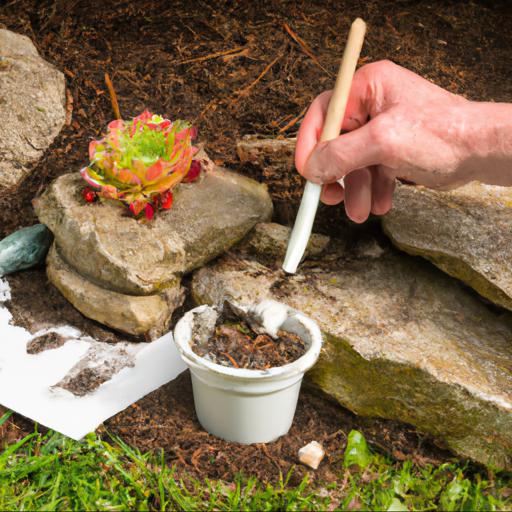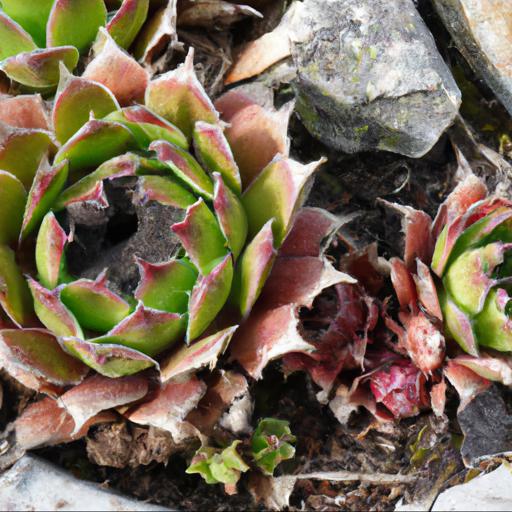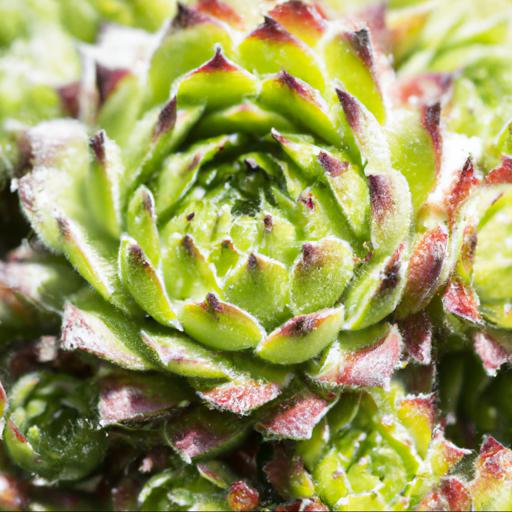Sempervivum pluto, also known as the “Pluto Houseleek,” is a unique and hardy succulent plant native to the mountains of Central and Southern Europe. This plant is perfect for gardeners of all levels, as it is easy to care for and requires minimal maintenance.
Its rosette-shaped leaves come in a variety of colors and sizes, ranging from deep purple to bright green. Sempervivum pluto is an excellent choice for rock gardens, containers, or as a ground cover in sunny spots. This hardy plant is drought tolerant, requires little water, and can thrive in a wide range of temperatures.
With its unique look, Sempervivum pluto will make a great addition to any garden.
Benefits of growing sempervivum pluto

Growing Sempervivum pluto, one of the most beloved types of succulent, brings many benefits to gardeners. These hardy plants are low-maintenance and can thrive even in relatively cooler climates.
With colorful foliage in shades of pink, red, and yellow, Sempervivum pluto adds a unique and exotic look to gardens and can be easily used in combination with other plantings to create a vibrant display. Typically growing no more than 4 inches tall, Sempervivum pluto is a small, squat plant. Its heart-shaped leaves are generously spaced, giving the illusion of a large, full planting.
They’re even easy to groom, as the plants naturally tend to spread, creating a lush look. The most common problem with Sempervivum pluto is that it can spread quickly.
While it is beneficial to have an abundance of smaller plants, some gardeners may find the spread of plants in the garden, or in containers, to be too much. Still, this is a relatively simple problem to manage. All you need to do is trim back the overgrown areas during the winter months.
Sempervivum pluto can also be used as a ground cover to help keep grassy areas low maintenance. It is also a low-cost planting option since it requires minimal fertilizer or water to thrive. There are also several disease and pest-resistant varieties that make Sempervivum pluto an ideal choice for gardeners who don’t want to bother with a lot of upkeep.
These resilient plants come with a host of benefits and are a great choice for those looking to add a touch of exotic beauty to their gardens. If you’re ready to increase your garden’s aesthetic appeal and are looking for a low-maintenance plant to ensure a lasting beauty, Sempervivum pluto is a great option.
Tips for planting and caring for sempervivum pluto

Sempervivum pluto is a lovely addition to any garden. This drought-tolerant succulent is popular for its striking, velvety foliage and its hardy nature.
If you live in a region where the winters or summers are particularly hot and arid, a Sempervivum pluto is likely the perfect plant for your garden. Unlike other drought-tolerant plants, Sempervivum pluto is relatively low-maintenance and needs minimal effort to keep it looking at its best. When planting, it’s best to choose a site that is partially shaded and well-draining.
A layer of mulch around the base of the Sempervivum pluto will help retain moisture and protect its delicate roots from the sun. It’s also important to keep the soil consistently moist and slightly acidic.
However, the plant should never be left to sit in standing water, as this can cause root rot. Sempervivum pluto also requires regular fertilization, typically a diluted liquid fertilizer applied every two weeks in the growing season. As the plant matures, it should be pruned back periodically to keep it at a manageable size.
Pinching off any dead foliage and flowers will prevent any pests and diseases from taking hold. If pests such as mealybugs or aphids do become an issue, they can generally be treated with a natural pesticide such as neem oil or insecticidal soap.
All in all, if you add a Sempervivum pluto to your garden, you can rest assured knowing that you are in for a beautiful and long-lasting addition. With a little care and attention, this resilient succulent will enhance your garden for years to come.
Common problems with sempervivum pluto

Are you curious about why Sempervivum pluto plants have become notorious for presenting so many challenges to gardeners? When these little succulents are allowed to grow without guidance, they can be tricky to work with.
In this blog post, we’ll delve deeper into what makes Sempervivum pluto a unique and difficult plant so that you can understand how to tackle it in your own garden. The first issue with Sempervivum pluto is that it has completely uncontrolled growth. Without carefully monitoring and controlling its size, it can easily spread to take up more space than expected.
In addition, its leaves grow in all directions, making it difficult to create pleasing designs with it. Because of its abundant foliage, it’s advised to use it in small container gardens rather than larger beds to keep it from taking over the space. In addition to its unpredictable growth, Sempervivum pluto is finicky when it comes to the soil.
It prefers loam or sandy soils, but if the environment is too moist or soggy, it can succumb to a fungal infection. Also, it’s intolerant of both too little and too much water, making it tricky to give it the perfect amount.
Furthermore, it should be planted in a sunny region of the yard while avoiding direct exposure to the sun during the hottest part of the day. Taking care of Sempervivum pluto requires dedication, patience, and energy.
By following the guidelines mentioned in this blog post, however, you should be able to create a thriving garden that’s full of these wonderful succulents. With the right environment, soil, and maintenance plan, you can unlock the beauty of these plants and create a cheerful garden worthy of admiration.
Conclusion
Sempervivum pluto is a species of succulent native to the Mediterranean region. It is an evergreen perennial, growing up to 10 cm in height and spreading up to 30 cm wide. Its leaves are thick and fleshy, and its flowers are small and white.
It is drought tolerant and grows best in well-draining soil in full sun. This plant is a great choice for rock gardens, containers, and other areas with poor soil.
It is easy to care for and requires little maintenance.
FAQ
What is the scientific name of Sempervivum Pluto?
The scientific name of Sempervivum Pluto is Sempervivum tectorum.
What are the characteristics of Sempervivum Pluto?
Sempervivum Pluto is a succulent plant that is characterized by its rosette shape, thick, fleshy leaves, and red-tipped tips. It is drought-tolerant and requires minimal care, making it a popular choice for gardeners. It can grow in full sun or partial shade and prefers well-draining soil. It is also resistant to pests and diseases.
How does Sempervivum Pluto reproduce?
Sempervivum Pluto reproduces through offsets, which are small plantlets that grow from the base of the mother plant.
What is the ideal climate for Sempervivum Pluto?
Sempervivum Pluto prefers a cool climate with plenty of sun and well-draining soil. It should be grown in a sunny spot with protection from strong winds. It should be watered regularly during the growing season and allowed to dry out between waterings.
How often should Sempervivum Pluto be watered?
Sempervivum Pluto should be watered once every two weeks, or when the soil is dry.
What are the common pests and diseases of Sempervivum Pluto?
Common pests and diseases of Sempervivum Pluto include aphids, mealybugs, slugs, and fungal diseases such as powdery mildew and rust.

